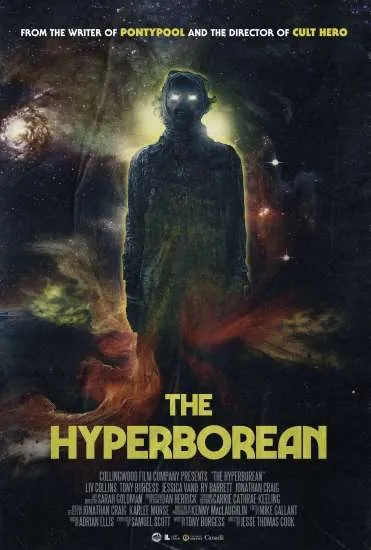Blood
The Hyperborean (2023) Review – Blood in the Snow – Voices From The Balcony

Following last year’s Cult Hero, director Jesse Thomas Cook (Monster Brawl, Deadsight) and writer Tony Burgess (Pontypool, Dreamland) are back with their fifth collaboration The Hyperborean which played at this year’s Blood in the Snow Film Festival. And right from the opening animation depicting some fictional strangeness afflicting the nonfictional McClure Arctic Expedition, it’s obvious this is as strange as anything they’ve given us before.
Diana (Liv Collins, The Hexecutioners, Creep Nation) sits at a table in a large conference room with Mr. da Silva (Steve Kasan, The Chamber of Terror, Covenant) and Ms. Ladouceur (Marcia Alderson, Cult Hero), two lawyers and eventually Mr. Denbok (Justin Bott, A Witches’ Ball, Fast and Furriest), a crisis manager, or spin doctor as they used to be called, who represent her late father Hollis’ (Tony Burgess) corporate interests. Their first question “How did your father die?” gets the answer “He was sucked up into the sky, and he popped”. Probably not what they wanted to hear.


The film then goes back two weeks as Diana starts to relate the events leading up to his death. He had invited his now grown children, Diana, Rex (Ry Barrett, Defective, The Drownsman) and Aldous (Jonathan Craig, Carved, Making Monsters) along with her husband Ian (Michael Masurkevitch, Snow Blinded, TP Tango) and Rex’s girlfriend Lovie (Jessica Vano, Art of Obsession, The Demolisher). The only other person there is Fontano (Justin Darmanin, Ejecta, The Hoard), Hollis’ butler /healer.
Cook and Burgess start The Hyperborean out as a rather standard tale of a family whose wealth is matched only by their dysfunction, gathered together for their father’s announcement about the family whisky business. That involves casks of 170-year-old whisky salvaged, or looted as the case may be, from Arctic exploration vessels. Thankfully, they manage to make this more interesting than the domestic drama in most films like this.


Part of that is due to the interplay between Diana, the lawyers and especially Mr. Denbok which is spirited and full of snark as she defends her story against their disbelief and advice on what should be said and who should be blamed. This only gets better after a mummified but still living seaman, the Hyperborean of the title, is discovered in one of the casks. And what else can he do after a 170-year bender except stagger around firing lasers from his eyes?
This is one of the few films where having the events told in flashback actually works. That’s due in large part to the script telling us several people died, but only revealing the identity of Hollis at the start. By the time who lives and who dies is clear, the story has actually gone somewhere that’s a secondary concern as The Hyperborean tries to ascend beyond a typical monster movie. Some viewers will not be happy with where it does go, but I found it to be an interesting change of pace from the standard plot of a mummy reviving then shambling around mutely killing people. Even science fiction variants like Time Walker haven’t been able to break free of.


So while there is a monster as well as some scares and a good bit of suspense, The Hyperborean isn’t a full on horror film and doesn’t try to be. Its focus remains on the dysfunctional characters at its centre and how they come together, or don’t, when things go off into The Twilight Zone. And while the resolution may feel a bit sappy, I found it to be a logical, if unexpected, ending that fits nicely with the rest of the film’s themes.
While it certainly wasn’t what I was expecting when I sat down to watch it, The Hyperborean kept my attention right up until the credits rolled. If you’re looking for something different, you could do worse than give it a try.
The Hyperborean played the Blood in the Snow Film Festival on November 24th. You can check for future screenings and release announcements on the production company’s Facebook page.

